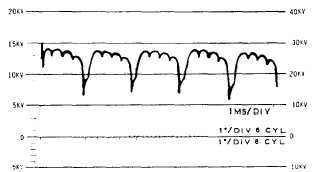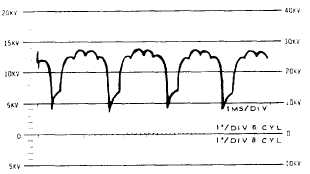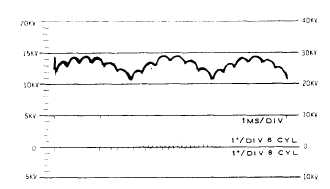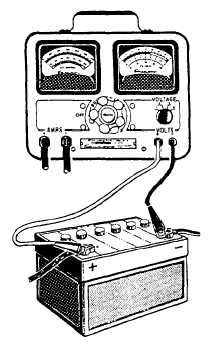
Figure 4-20.-Open diode pattern.
though both output current and voltage regulation appear to be acceptable. As a general rule, a shorted diode affects the output more than an open diode does. It not only reduces the output, but it also opposes the next pulse by allowing the current to flow back through the winding containing the shorted diode.
WEAK DIODES
As you can see from the screen pattern in figure 4-21, there is no interruption in the rectification of the diodes. However, there is a high and low peak every sixth pulse, indicating that the output of one diode is low and that it may be deteriorating (high resistance). This pattern may also occur due to a shorted winding since the number of windings determines the amount of output as well as the condition (resistance) of the diodes.
SHORTED WINDINGS
Depending on the location of the short, shorted windings and shorted diodes produce similar screen patterns because the defect is the same. Compare figures 4-19 and 4-22. The alternator test screen patterns shown arc for diagnosis only; therefore, the alternator must be

Figure 4-22.-Shorted winding pattern.
removed to locate the defective internal component. Now, it is a matter of verifying the problem with simple ohmmeter tests or by replacing defective components.
TROUBLESHOOTING THE CRANKING SYSTEM USING THE BATTERY STARTER TEST
To determine whether a battery is fit for service, you can perform a cranking system test with a battery starter tester, model BST, as shown in figure 4-23. This tester, made by Sun Electric Corporation, is designed to test only batteries and starting systems of vehicles using 6-, 12-, 24-, or 32-volt systems.

Figure 4-21.-Poor diode pattern.

Figure 4-23.-Cranking voltage test.
Continue Reading